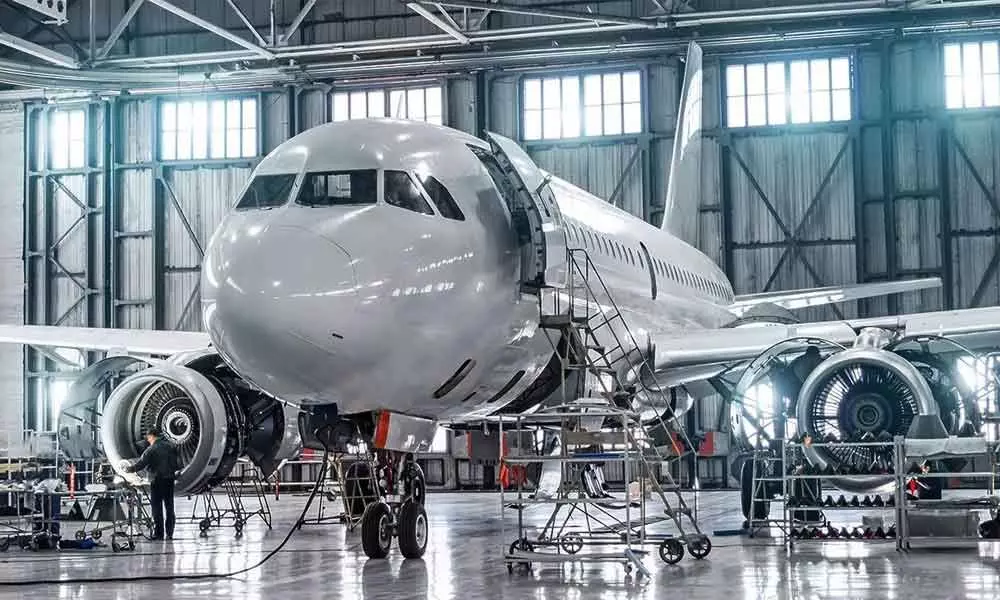Global aerospace mkt expected to reach $573.6 bn by 2030
The market is expected to grow from $298.0 billion in 2020 to $430.9 billion in 2025 at a rate of 7.7%; Growth factors in the historic period include increased demand for air travel technological advances, emerging economies, change in social behaviour and low interest rates
image for illustrative purpose

According to The Business Research Company, The global aerospace market reached a value of nearly $298.0 billion in 2020, having decreased at a compound annual growth rate (CAGR) of -0.3 per cent since 2015. The market is expected to grow from $298.0 billion in 2020 to $430.9 billion in 2025 at a rate of 7.7 per cent. The global aerospace market is then expected to grow at a CAGR of 5.9 per cent from 2025 and reach $573.6 billion in 2030.
Growth factors in the historic period include increased demand for air travel technological advances, emerging economies, change in social behaviour and low interest rates. Factors that negatively affected growth in the historic period were high exchange rate fluctuations, political uncertainties, volatile raw material prices and grounding of planes.
Going forward, growing demand for commercial use of drones, emerging economies, rapid advances in technology. Factors that could hinder the growth of the aerospace market in the future include budget airlines' bankruptcy, order cancellations, increased cyber-attacks, global warming, poor aviation infrastructure, geo-political tensions, global recession, and coronavirus pandemic.
The key drivers of the aerospace market include:
Commercial use of drones
Legal authority allowing the use of drones for commercial use is being extended more widely increasing a potential revenue channel for aircraft manufacturers. For example, the US Federal Aviation Authority issued an operations over people rule which became effective on April 21, 2021. Drone pilots operating under Part 107 may fly at night, over people and moving vehicles without a waiver as long as they meet the requirements defined in the rule. Airspace authorizations are still required for night operations in controlled airspace under 400 feet. Relaxation of the regulations is expected to aid the market for commercial drones in the forecast period. Many other countries follow the FAA's regulatory lead to clear commercial drones for take-off not just in the USA, but worldwide. Combined with the launch of reliable and stronger drones specifically for commercial use, such as the drones manufactured by a Chinese company DJI and public sales of commercial drones are expected to drive rapid growth in the drone segment of the aerospace market.
Use of smart materials
Companies in the aircraft manufacturing market are focusing on the use of smart materials for manufacturing. New materials such as graphene and carbon nanotubes help to make airplane wings more efficient by reducing weight and fuel consumption. These materials make the wings lighter, thus increasing efficiency, than those with conventional designs, whether made from metal or composites. In 2019, researchers from MIT and NASA developed a morphing wing using these new materials. It is assembled from hundreds of tiny identical pieces which can morph to control the plane's flight, and could provide a significant boost in aircraft production, flight, and maintenance efficiency.
Virtual Reality (VR) in aerospace manufacturing
Aerospace manufacturing companies are using VR technologies to improve manufacturing efficiency. The technology is getting deployed in areas of training, maintenance, and design and manufacturing. VR helps create a virtual environment that allows engineers to view composite structures and learn how to manage them well. It also helps perfecting prototypes as designers can explore a virtual mock-up of the entire aircraft and can work to eliminate issues faster than normal which also reduces the investment in costly and time intrusive prototypes. For instance, Boeing uses VR for designing and testing new commercial aircrafts which has helped development teams address human-factor issues in pre production designs.

